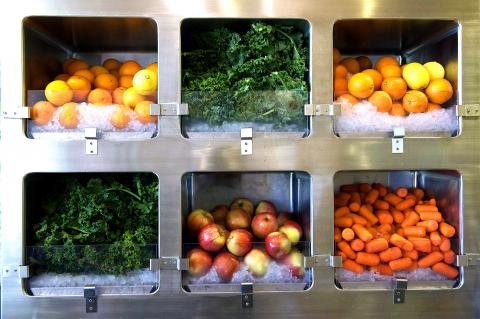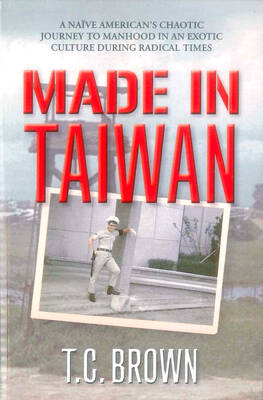Move over flat whites. A drink the color and consistency of Labyrinth’s Bog of Eternal Stench is emerging as the nation’s must-slurp beverage: green juice. Drinks made from leafy green vegetables are popping up on supermarket shelves, in juice bars such as Crussh, in recipe books (thanks Gwyneth Paltrow) and on Instagram, currently clogged with #greenjuice selfies. New York is undergoing a “juice bar brawl” as each brand claims its juice is the healthiest.
While vegetable juice is nothing new, with the likes of V8 having been around for years, green juicing uses large quantities of leafy veg and brassicas such as kale, spinach, chard and broccoli. The other main difference between (fresh) green juice and traditional vegetable drinks is the technique — cold-pressing, where the juice is extracted by crushing. Centrifugal juicers use fast-spinning blades that heat up, thus, cold-press converts say, oxidizing and destroying some of the nutrients in the juice. Clare Neill, co-founder of juice company Radiance Cleanse, says juice from a centrifugal machine “oxidizes faster because so much air has gone through the juice while it’s being made.”
Fresh green juice wins several health points over packaged fruit juice and smoothies. First, most fruit juices sold in shops are pasteurized. Nutritionist Vicki Edgson says: “They’re heat-treated so they have a longer shelf-life and no bacteria, but this means a lot of the nutritional value is knocked out.” Second, green juices contain much less sugar than their fruity counterparts. Third, there is a range of nutrients present in those dark green vegetables — kale is packed with beta-carotene, calcium, vitamin C and vitamin K.

Photo: Bloomberg
So is drinking a glass of green juice as good as eating the vegetables? Not quite. Registered dietician Iona Taylor says: “You’ll get the vitamins and minerals but not the fiber. And the soluble fiber in vegetables is really good for your cholesterol and blood pressure.” There is a potential way around this. Edgson suggests avoiding both standard centrifugal and cold-press juicers, and using a powerful blender instead: “When you pulverize or blend with a Vitamix or similar, you get the benefits of the fiber as well.”
Both Edgson and Taylor say there are some people who should approach green juice with caution. Edgson checks that clients aren’t on anti-depressants or blood-thinning medication, and is also “a little wary when women are in the first trimester of pregnancy”. This is because “many of the ingredients that go into a green juice speed up detoxification through the liver,” she says. She is concerned that the juice could increase the rate at which medication moves through the body.
For the rest of us, green juice seems an easy way to add more leafy veg to our diets. “You can put a lot more in a juice than you could sit and eat,” says Edgson. But how palatable is a big glass of cabbage? I spent a week finding out.
I kicked off with a mini juice fast from Radiance Cleanse, with six 500ml bottles for the day. The juices were delicious. Alka Green — courgette, spinach, broccoli, fennel, apple and lemon — tasted zesty and vital, with no hint of broccoli or spinach. I spent the day hovering between the sofa and loo, though, and missed solid food, so for the rest of the week I incorporated green juice into my regular diet instead. I made my own, following Paltrow’s tasty green juice recipe:
kale, mint and an all-important apple.
Green juice is surprisingly filling. I drank it mid-afternoon and found it alleviated snack cravings. I experimented with spinach, spring greens, cavolo nero. In juice form, none tasted like the vegetables in question. Most likely it was psychological, but I felt healthier and more energetic, too. The biggest stumbling block is the cost of the equipment. I borrowed a US$480 Lakeland juicer, but could a US$40 juicer be worth it, too? “Definitely — 100%,” says Neill. Just drink it straight away, rather than storing it in the fridge, and bear in mind “you’ll need to juice more to get the same volume.” So now I’ve found an affordable compromise, my new green juicing habit is here to stay. Kale and spinach to go, please.

By 1971, heroin and opium use among US troops fighting in Vietnam had reached epidemic proportions, with 42 percent of American servicemen saying they’d tried opioids at least once and around 20 percent claiming some level of addiction, according to the US Department of Defense. Though heroin use by US troops has been little discussed in the context of Taiwan, these and other drugs — produced in part by rogue Chinese Nationalist Party (KMT) armies then in Thailand and Myanmar — also spread to US military bases on the island, where soldiers were often stoned or high. American military policeman

Under pressure, President William Lai (賴清德) has enacted his first cabinet reshuffle. Whether it will be enough to staunch the bleeding remains to be seen. Cabinet members in the Executive Yuan almost always end up as sacrificial lambs, especially those appointed early in a president’s term. When presidents are under pressure, the cabinet is reshuffled. This is not unique to any party or president; this is the custom. This is the case in many democracies, especially parliamentary ones. In Taiwan, constitutionally the president presides over the heads of the five branches of government, each of which is confusingly translated as “president”

An attempt to promote friendship between Japan and countries in Africa has transformed into a xenophobic row about migration after inaccurate media reports suggested the scheme would lead to a “flood of immigrants.” The controversy erupted after the Japan International Cooperation Agency, or JICA, said this month it had designated four Japanese cities as “Africa hometowns” for partner countries in Africa: Mozambique, Nigeria, Ghana and Tanzania. The program, announced at the end of an international conference on African development in Yokohama, will involve personnel exchanges and events to foster closer ties between the four regional Japanese cities — Imabari, Kisarazu, Sanjo and

Sept. 1 to Sept. 7 In 1899, Kozaburo Hirai became the first documented Japanese to wed a Taiwanese under colonial rule. The soldier was partly motivated by the government’s policy of assimilating the Taiwanese population through intermarriage. While his friends and family disapproved and even mocked him, the marriage endured. By 1930, when his story appeared in Tales of Virtuous Deeds in Taiwan, Hirai had settled in his wife’s rural Changhua hometown, farming the land and integrating into local society. Similarly, Aiko Fujii, who married into the prominent Wufeng Lin Family (霧峰林家) in 1927, quickly learned Hoklo (commonly known as Taiwanese) and